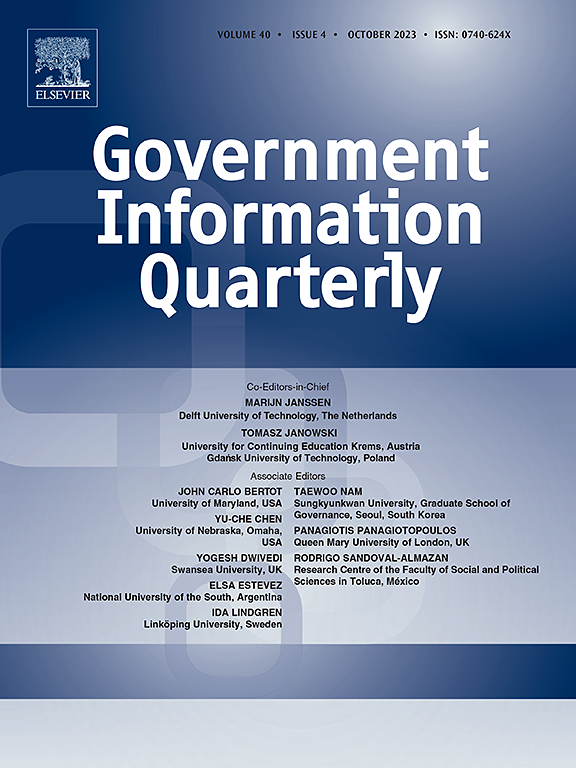An agile bureaucracy? Lessons from an ethnographic study of agile teams in the Norwegian public sector
IF 10
1区 管理学
Q1 INFORMATION SCIENCE & LIBRARY SCIENCE
引用次数: 0
Abstract
As governments increasingly try to develop their own technological solutions to handle growing demands, a key response has been to move away from traditional “waterfall” methods and towards modern “agile” principles for innovation. While agile principles are advocated as crucial to handling the complexity of the public sector, they have also been found to be difficult to implement in practice. To advance our understanding of these difficulties, this article aims to unpack the challenges facing software development teams when trying to use agile methods in the public sector. The article draws on ethnographic data from a study of software development teams in the Norwegian Labor and Welfare administration (NAV). By analyzing these data through the theoretical lens of institutional theory – particularly emphasizing institutional complexity due to conflicting institutional logics – the article uncovers three critical tensions facing the development teams: between bottom-up methods vs. top-down delegation, flexibility vs. pre-planned mandates, and “fast” teams vs. a “slow” context. These tensions indicate a “decoupling” between proclaimed agility and practiced methodologies, with the practical reality of the teams' working environment being characterized as a mixture of elements from both waterfall and agile methods. By uncovering these tensions and contradictions, the article explores the institutional complexity of public sector innovation, in which workers struggle to navigate an institutional context characterized by conflicting demands.
灵活的官僚主义?挪威公共部门敏捷团队的民族志研究的经验教训
随着各国政府越来越多地尝试开发自己的技术解决方案,以应对日益增长的需求,一个关键的回应是放弃传统的“瀑布”方法,转向现代的“敏捷”创新原则。虽然人们认为敏捷原则对于处理公共部门的复杂性至关重要,但人们也发现它们在实践中难以实施。为了加深我们对这些困难的理解,本文旨在揭示软件开发团队在试图在公共部门使用敏捷方法时所面临的挑战。这篇文章从挪威劳动和福利管理局(NAV)的软件开发团队的研究中提取了人种学数据。通过制度理论的理论视角分析这些数据——特别强调由于冲突的制度逻辑而导致的制度复杂性——文章揭示了开发团队面临的三个关键紧张关系:自下而上的方法vs.自上而下的授权,灵活性vs.预先计划的授权,以及“快”团队vs.“慢”环境。这些紧张表明了宣称的敏捷性和实践的方法之间的“解耦”,团队工作环境的实际现实被描述为瀑布方法和敏捷方法的混合元素。通过揭示这些紧张和矛盾,本文探讨了公共部门创新的制度复杂性,在这种制度下,工人们努力在一个以相互冲突的需求为特征的制度背景下导航。
本文章由计算机程序翻译,如有差异,请以英文原文为准。
求助全文
约1分钟内获得全文
求助全文
来源期刊

Government Information Quarterly
INFORMATION SCIENCE & LIBRARY SCIENCE-
CiteScore
15.70
自引率
16.70%
发文量
106
期刊介绍:
Government Information Quarterly (GIQ) delves into the convergence of policy, information technology, government, and the public. It explores the impact of policies on government information flows, the role of technology in innovative government services, and the dynamic between citizens and governing bodies in the digital age. GIQ serves as a premier journal, disseminating high-quality research and insights that bridge the realms of policy, information technology, government, and public engagement.
 求助内容:
求助内容: 应助结果提醒方式:
应助结果提醒方式:


